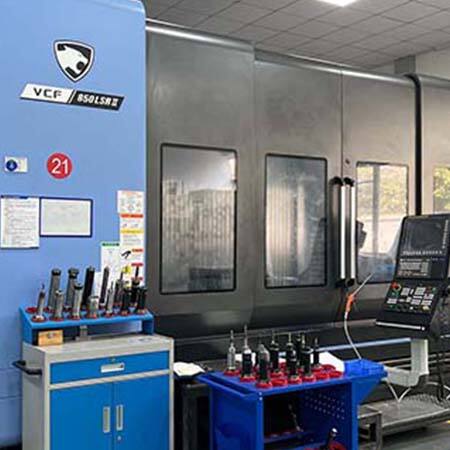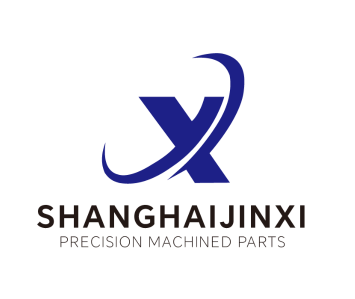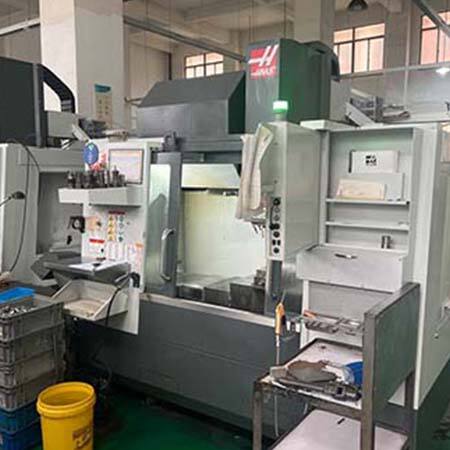الدقة والتعقيد في تصنيع CNC
يوفر التصنيع الحديث باستخدام الحاسب الآلي دقة غير مسبوقة للصناعات الحيوية مثل صناعة السيارات والفضاء الجوي. تصنيع باستخدام الحاسب الآلي CNC تُحقق الأنظمة المتقدمة تفاوتات على مستوى الميكرون مع إنتاج مكونات ذات أشكال هندسية معقدة من خلال مسارات أدوات متزامنة متعددة المحاور. تُلبّي هذه الجمعية بين الدقة والكفاءة التقنية المتطلبات المتغيرة لتصميمات خفيفة الوزن وأنظمة ميكانيكية موفرة للطاقة.
التفاوتات الدقيقة للمكونات السيارات (±0.005 مم)
تتطلب تصنيع أجزاء حقن الوقود ونظام نقل الحركة لدى مصنعي السيارات تحاملاً بمقدار ±0,005 مم. تُحقق هذه الدقة باستخدام غلاف ثابت حرارياً والتحكم النشط في مسار الأداة في الوقت الفعلي بواسطة آلات DNC. تقوم أنظمة القياس المتقدمة بإجراء التحقق أثناء العملية، وتعويض تآكل الأداة تلقائيًا. تُجري آلات القياس الإحداثية (CMM) قياس توافق الأبعاد، بحيث تلبي الأجزاء متطلبات دقيقة لتجميع السيارات أو مواصفات أخرى.
المعالجة متعددة المحاور للهياكل المعقدة
تتيح مخرطة CNC ذات المحور الخمسة تصنيع أجزاء الطيران المعقدة حتى تلك التي تحتوي على زوايا مركبة وتحت قطع في إعداد واحد. تسمح هذه العملية الديناميكية بتحريك القطعة أثناء عملية القطع للتخلص من خطوتين أو أكثر في الإعداد، مما يقلل من خطر تراكم الأخطاء. ويساعد هذا في الحفاظ على دقة 0.008 مم على الأسطح المنحنية مثل شفرات التوربينات، وهو أمر بالغ الأهمية لأداء الديناميكا الهوائية.
معايير ضبط الجودة المتوافقة مع المعيار ISO 9001
يتطلب الامتثال للمعيار ISO 9001 وجود ضوابط عملية مُسجلة على طول تدفق العمل في التصنيع باستخدام CNC. يستخدم فنيو الجودة التحليل الإحصائي للتنبؤ بدورة استبدال الأدوات، ومنع انحراف التحملات. وتوفر إمكانية تتبع المواد بالكامل وسجلات الفحص الآلي متطلبات الجهات التنظيمية الخاصة بالعملاء في قطاعي الطيران والطب، ويتم إجراء عمليات تدقيق خارجية كل ستة أشهر للتأكد من الامتثال.
قدرات التخصيص في التشغيل بالماكينات CNC
حلول أدوات مخصصة للصناعات المتخصصة
تصنيع باستخدام الحاسب الآلي CNC تتيح إمكانية التخلص من أدوات الإنتاج الدائمة المكلفة، مما يسمح بإنتاج مكونات تناسب التطبيقات ذات الكميات المنخفضة. تُعد هذه القدرة ضرورية للصناعات مثل روبوتات البحر والتجهيزات الخاصة بالمعدات شبه الموصلة، حيث تتطلب 83% من المكونات هندسات مميزة، ولا تتوافق مع أدوات الإنتاج الجاهزة (مجلة التصنيع المتقدم 2024). تعمل أنظمة التشغيل الخمسية على تصنيع قنوات التبريد المعقدة والممرات الدقيقة للسوائل في إعدادات واحدة، مما يقلل وقت الإنجاز بنسبة 40% مقارنةً بالحلول التقليدية.

تعديلات منتجات مخصصة بدون حد أدنى للطلب
بالنسبة لنوع أنظمة CNC المتاحة اليوم، أصبح من الممكن إجراء تغييرات، مثل عندما تقوم بإنتاج كميات صغيرة ودون الحاجة إلى إعادة تجهيز، مع وجود عواقب ضئيلة جدًا في هذه العملية. وأشار 36٪ من المشاركين في استطلاع رأي إلى أنهم يقضون أكثر من 30 دقيقة على اختبار مؤهلات كل متغير في تصميمهم. وكشف استطلاع أجرته في 2023 على مهندسي الأجهزة أن 72٪ منهم يستخدمون ويعتمدون على المرونة اللازمة لاختبار متغيرات أكثر في التصميم قبل اختيار القياسات الأكثر دقة لتصميمهم، مع 3-5 متغيرات لكل مكون. تقوم مراكز التشغيل بذلك من خلال تحديثات CAD المستندة إلى السحابة ووصفات المسار التكيفي للأدوات لتسريع الانتقال إلى الإصدار التالي خلال 30 دقيقة أو أقل.
دراسة حالة: عمليات إنتاج الأثاث المخصص
تمكن مصنّع للاثاث الفاخر من تحقيق وفورات في التكاليف بنسبة 65٪ على نموذجه الأولي الأخير من خلال استخدام قوالب ألومنيوم مُصنعة باستخدام ماكينات CNC للصهر. وقد أنتج النظام أسبوعيًا 14 تصميمًا فنيًا مختلفًا من طراز الفن الزخرفي، وكان كل تصميم يحتاج إلى تفاوت في الشكل بقيمة ±0,12 مم لتسهيل عملية التجميع. وحافظت التعويضات الخاصة بارتداء الأدوات أثناء التشغيل على إنهاء السطح بقيمة Ra 0.8μm بعد 300 ساعة، مما يؤكد أن ماكينات CNC يمكنها الجمع بين التفاصيل الفنية والدقة الصناعية المتكررة.
النمذجة الأولية السريعة باستخدام ماكينات CNC
لقد غيرت ماكينات CNC بالكامل طريقة إنجاز النمذجة الأولية السريعة، حيث تجمع بين دقة التصنيع بالقطع وسرعة العمليات الرقمية في التصنيع. وتتيح ماكينات CNC ذات المحاور الخمسة الحالية إنجاز نماذج وظيفية خلال 72 ساعة بدقة ±0,01 مم (مرجع Kirmell CNC Benchmark 2023). وتمكن هذه الميزة المهندسين من اختبار الديناميكا الهوائية في أنفاق الرياح، أو التحقق من الراحة الوظيفية في المقابض الطبية، دون تكبّد تأخيرات مكلفة.
72 ساعة لاستلام النماذج الوظيفية
تستخدم بروتوكولات CNC عالية السرعة أحدث التقنيات والأساليب وأكثر الآلات إنتاجية في الصناعة لإنتاج مجموعة واسعة من النماذج الأولية باستخدام CNC. فعلى سبيل المثال، يُجري مطورو الطيران والفضاء اختبارات على أجزاء عجلات الهبوط خلال ثلاثة أيام عمل فقط، أي أقل بنسبة تزيد عن 68% مقارنة بالمتوسط الصناعي (تقرير ديڤيسيكس للتصنيع 2024). وتقوم الآلات متعددة المحاور بتجويف قنوات التبريد الداخلية والأحاف الخارجية في عملية واحدة فقط، لتحقيق دقة أبعاد تصل إلى متوسط 98.7% في المواد التي تتراوح من الألومنيوم 7075 إلى البلاستيك الحراري PEEK.
التحقق التكراري من تصميم الأجهزة الطبية
تُستخدم بروتوتايب CNC في تصميم نماذج أولية تتوافق مع معايير إدارة الغذاء والدواء (FDA). تقوم شركات تصنيع الغرسات العظمية بإجراء 12 إلى 15 تجربة فعلية شهريًا على أقفاص عمودية من التيتانيوم، مع استقبال ملاحظات من جراحات تم تنفيذها باستخدام المحاكاة الحاسوبية. تولّد أنظمة التشغيل المغلقة المسارات التي سيتم تنفيذها قريبًا، ويمكنها تحسين مسارات الأدوات ديناميكيًا بين الإصدارات المختلفة، مع استخدام معايير الجودة ISO 13485، ومع متوسط زمن إنجاز 14 يومًا. تقلل هذه الطريقة من تكاليف التطوير بنسبة 42% مقارنةً بحلول الطباعة ثلاثية الأبعاد التي يتم تفويضها خارجيًا (دراسة ابتكارات التكنولوجيا الطبية 2023).
تشغيل CNC الاقتصادي من حيث التكلفة للأحجام الصغيرة
تحليل نقطة التعادل: دفعات إنتاج تتراوح بين 50 إلى 500 وحدة
يحدث نقطة التقاء التصنيع باستخدام الحواسيب (CNC) مع الطرق التقليدية من حيث التكلفة بين 50 و500 وحدة، كما أظهرت دراسة مرجعية أجرتها مجموعة بحوث التصنيع المتقدم لعام 2023. تحت هذا الحد، تمثل الأعمال اليدوية وإعداد الأدوات الجزء الأكبر من التكاليف في العمليات التقليدية. أما ما بعد 500 وحدة، فإن صب الحقن يكون عادةً أقل تكلفة. وتؤدي أتمتة عمليات التصنيع باستخدام الحواسيب إلى خفض تكلفة الوحدة بنسبة 40٪ في الإنتاجيات التي تزيد عن 50 وحدة مقارنة بالتصنيع اليدوي، كما ورد في تقرير مواد صناعة الأحذية لعام 2024.
تختلف هذه النقطة حسب تعقيد القطعة – فالأجزاء التي تتطلب تشغيلًا خماسي المحاور أو موادًا غير تقليدية تبقى فيها ميزة CNC حتى 700 وحدة. ويستخدم المصنعون برامج نمذجة التكلفة في الوقت الفعلي لتحسين حسابات نقطة التعادل، والتي تأخذ بعين الاعتبار معدلات هدر المواد (متوسط الصناعة ±3.2٪) ومؤشرات استخدام الآلات.
استراتيجيات استهلاك تكاليف الأدوات
تقلل تخصيص أدوات ذكية من تكاليف كل قطعة بنسبة 18–22% في إنتاج CNC منخفض الحجم، وفقًا لمسح عام 2024 شمل 120 موردًا في قطاع الطيران والفضاء. وتمكن الأنظمة المعيارية للأدوات من إعادة تكوين 83% من الملحقات عبر مشاريع متعددة، مما يقلل من الاستثمارات الأولية. أما بالنسبة للقطع المعقدة التي تتطلب أدوات مخصصة، فإن الشركات المصنعة تستخدم:
- إطفاء تدريجي : توزيع تكاليف الأدوات على 3–5 دفعات إنتاجية
- أدوات هجينة : الجمع بين إدخالات قياسية (توفير 60% في التكلفة) مع مكونات محددة للمشروع
تمدد الأنظمة المتقدمة لمراقبة الماكينات عمر الأدوات بنسبة 35% من خلال تنبيهات الصيانة التنبؤية، وقد أكدت Workshops معتمدة بشهادة ISO 9001 صحة ذلك باستخدام أجهزة استشعار ذكية لقياس البلى. تجنب هذه الطريقة تكاليف سنوية تقدر بـ 740 ألف دولار لاستبدال الأدوات لدى الشركات المصنعة متوسطة الحجم (Ponemon 2023).
التنوع في مواد عمليات CNC
تتيح ماكينات التشغيل باستخدام الحاسوب (CNC) الحديثة التعامل مع أكثر من 50 درجة من المواد، مما يمكّن الشركات المصنعة من تحسين المكونات عبر تطبيقات الطيران والطب والصناعة. تضمن هذه المرونة للمهندسين القدرة على مطابقة خصائص المواد بدقة مع متطلبات التشغيل مع الحفاظ على تحمل ±0.005 مم.
الألومنيوم من الدرجة الجوية مقابل البلاستيك الهندسي
من المعروف أن سبيكة الطيران 7075-T6 قادرة على الوصول إلى مقاومة شد تزيد عن 570 ميجا باسكال مع كثافة أقل بنسبة 40٪ مقارنة بالصلب في مكونات الطائرات الهيكلية. تتمتع بلاستيكات مثل PEEK باستقرار أبعادي عند درجة حرارة 250 مئوية ومقاومة للعناصر الكيميائية، ولذلك تُستخدم في تغليف الأجهزة الطبية المعقمة. يعتمد الاختيار على المفاضلة بين الأحمال الميكانيكية وقابلية التأثر بالتأثيرات الحرارية/الكيميائية.
تشغيل المواد المركبة للتطبيقات ذات الإجهاد العالي
توفر البوليمرات المدعمة بالألياف الكربونية (CFRP) نسبة قوة إلى وزن تبلغ 8:1 مقارنة بالصلب اللين، مما يسمح بخفض الوزن بنسبة 60% في الأذرع الروبوتية دون التأثير على المتانة. تستخدم مراكز CNC المتقدمة أدوات مغطاة بالألماس تدور بسرعة 20,000 دورة في الدقيقة لمنع التشقق أثناء تشغيل المواد المركبة، وهو شرط أساسي لصناديق بطاريات المركبات الكهربائية (EV) التي تتعرض لحمولات اهتزاز تصل إلى 10G.
تقنيات تحسين التشطيب السطحي
تؤثر المعالجات السطحية بشكل مباشر على عمر المكونات:
- التشطيب الدقيق يحقق خشونة سطحية Ra ≈ 0.2 ميكرومتر للمآخذ الهيدروليكية
- التأنود من النوع الثالث يشكل حواجز أكسدة بسمك 50 ميكرومتر على سطح الألومنيوم
- التشطيب الاهتزازي يزيل الشوائب التي تقل عن 5 ميكرومتر على الحواف المحملة
تمضي هذه الطرق في مضاعفة عمر المكونات ثلاث مرات في اختبارات ASTM B117 للتآكل بالرش الملحي مع الحفاظ على الدقة الأبعادية.
التكامل الرقمي في أنظمة عمل CNC الحديثة
مصادقة البرمجيات CAD/CAM
توفر عمليات CNC المعاصرة دقة لم تكن ممكنة من قبل وذلك بسبب استخدام برامج CAD/CAM مباشرة. يمكن للبرامج المتقدمة أن تولّد تلقائيًا تعليمات G-code من نموذج ثلاثي الأبعاد دون الحاجة إلى تدخل بشري أو كتابة تعليمات G-code مخصصة من قبل المشغل، مما يقلل من التدخل البشري المطلوب ويزيد من السرعة. يتم هنا الاختيار بين اكتشاف التصادم في الوقت الفعلي الحقيقي ومحاكاة التشغيل وبين تقليل الأخطاء التجريبية بنسبة 90٪ قبل دخول مرحلة الإنتاج. إن هذه السلسلة الرقمية مُعدِلة بشكل خاص في تصنيع الطائرات والأجهزة الطبية، نظرًا للهندسات المعقدة الدقيقة التي تتطلب أن تكون هوامش الخطأ أقل من خمسة مايكرون عبر 97 بالمئة من المواصفات.
أنظمة مراقبة الآلات المدعومة بإنترنت الأشياء
تقوم المستشعرات الذكية بمراقبة أكثر من 120 معلمة تشغيلية في كل دورة تشغيل، مما يُسهم بدوره في تشغيل خوارزميات الصيانة التنبؤية، ومنع 30٪ من توقفات العمل غير المخطط لها (ماكنزي 2023). تعمل المحاور الدوارة عند درجات حرارة ثابتة وتُكيّف سرعة دورانها (RPM) في الوقت الفعلي بناءً على ملاحظات اهتراء الأدوات من البرنامج، لضمان دقة موضعية تبلغ ±0.002 مم (0.00007 بوصة) على مدار ساعات من الإنتاج المتواصل (حتى 500 ساعة). يُبلغ كبار موردي صناعة السيارات أن أوقات الدورة الآن أصبحت أسرع بنسبة 15٪ باستخدام شبكات إنترنت الأشياء لمراقبة الاهتزازات التي تقوم تلقائيًا بتصحيح التشويهات التوافقية.
الاست traceability في سلسلة التوريد القائمة على البلوك تشين
تُسجِّل تقنية الدفتر الموزع سجلًا دائمًا لكل قطعة تُصنَّع باستخدام ماكينات CNC، وتسجِّل بيانات عن تأريخ المواد بنسبة 47٪ أكثر من الأنظمة القديمة. تتمكَّن صناعات الطيران والفضاء التي تطبِّق دمج البلوك تشين من تقليل عدد أخطاء المُعاملات الورقية خلال عمليات تدقيق إدارة الطيران الفيدرالية بنسبة 83٪ (ديلويت 2024). يتم توقيع كل من الطابع الزمني لكل عملية ونتيجة فحص الجودة بشكل تشفيري لضمان التحقق الفوري من الامتثال لمعايير ISO 13485 في سلاسل التوريد متعددة المستويات.
قسم الأسئلة الشائعة
ما هي فوائد استخدام ماكينات CNC في التصنيع؟
توفر ماكينات CNC فوائد تشمل الدقة والكفاءة والمرونة. تتيح هذه الماكينات للمصنِّعين إنتاج أجزاء معقدة بدقة عالية، والحفاظ على التحمل المطلوب طوال عملية الإنتاج، والتكيف بسهولة مع مواد وتصاميم مختلفة.
كيف تتكيّف ماكينة CNC مع المواد المختلفة؟
يمكن لعمليات التشغيل باستخدام الحاسب الآلي التعامل مع أكثر من 50 درجة من المواد، من الألومنيوم عالي الجودة المستخدم في صناعة الطائرات إلى البلاستيك الهندسي والمواد المركبة. تتيح هذه المرونة للمصنّعين تخصيص المواد وفقًا للاحتياجات المحددة للتطبيقات المختلفة، مع الحفاظ على دقة القياسات.
لماذا يعد النمذجة السريعة مهمة في التشغيل باستخدام الحاسب الآلي؟
النمذجة السريعة ضرورية لاختبار التصاميم بسرعة وكفاءة. تتيح آلات التشغيل باستخدام الحاسب الآلي إنتاج نماذج أولية قابلة للعمل بدقة عالية وفي إطار زمني قصير، مما يقلل من التأخيرات ويساعد على إجراء اختبارات متكررة وتأكيد الجودة.
كيف تحسّن تكاملات إنترنت الأشياء والبلوك تشين من تصنيع القطع باستخدام الحاسب الآلي؟
يوفر تكامل إنترنت الأشياء المراقبة في الوقت الفعلي والصيانة التنبؤية، مما يقلل بشكل كبير من وقت التوقف ويعزز الكفاءة. ويضمن البلوك تشين تتبعًا شفافًا في سلسلة الإمداد، مما يعزز الدقة والامتثال أثناء عمليات التدقيق.

